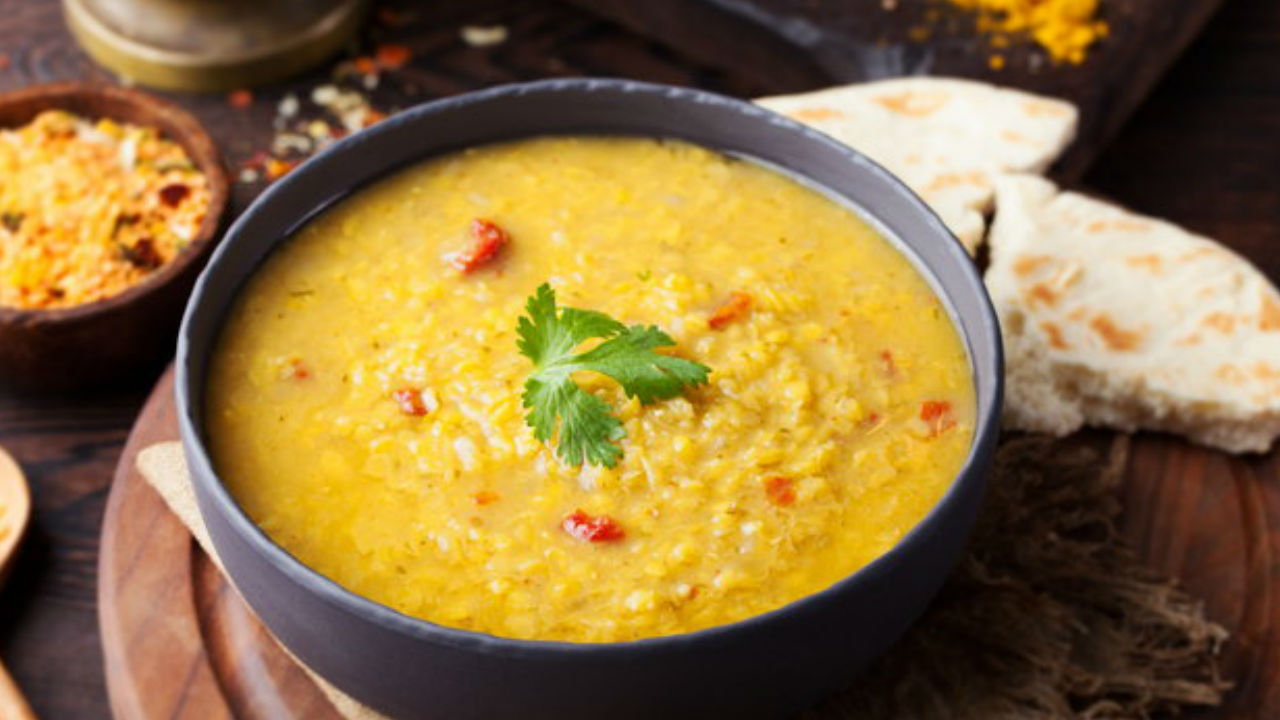

Thu, 31 January 2019

Chef Arun Kapil is in the Ireland AM kitchen this morning to show us how to make a a Vegan Tarka Dahl made with lentils, Cumin and Tumeric.
Ingredients:
250g pulses moong dahl (red lentils or your favourite type of 'lentil'), rinsed thoroughly
500ml water (enough to cover the pulses)
1 level tsp, turmeric powder
salt to taste, maybe 2 tsp as a suggestion
4 tblsp sunflower oil
1tsp cumin seeds, whole
4 cloves of garlic, finely chopped or blitzed
1 chopped fresh red Bird’s Eye chilli or 1 tsp chilli flakes (optional and according to your heat tolerance!)
Fresh coriander, finely chopped
Method
1.Pour the lentils into a saucepan along with the water. Add the turmeric powder
2.Bring to the boil, half cover with a lid, then turn down the heat; gently allow them to simmer and bubble away until the lentils are just about tender enough to eat
3.Add the salt, stir through the lentils and allow to simmer gently for another 2 or 3 minutes.
4.Turn off the heat and set the saucepan to one side, off the heated 'ring' and keep covered with the lid.
Now for the ‘Tarka’ part...
Take care during this next part (with the hot oil), and work quickly so as not to burn the spices
5.Take a small saucepan. Add the oil to the pan and heat, over a high flame until the oil starts to smoke.
6.Add the cumin seeds, swirl around in the pan, off the heat. Then immediately add the garlic and chilli. Keeping a firm grip of the pan's handle swirl the spice around in the oil, taking the pan off and on the heat to prevent the garlic and spices burning, but so as to keep just enough heat to fry everything.
7.When the spices and garlic are a light brown, nutty colour, turn off the heat, lift the lid to the lentils' saucepan, pour in the hot oil and (tempered) spices and immediately replace the lid.
NB: Be prepared for lots of steam and sizzling, hissing sounds as you add the hot oil to the lentils.
8.Gently swirl the (lentil) saucepan to combine all the flavours.
9.Leave the saucepan for a couple of minutes before lifting the lid, savouring the gorgeous spicy aromas, sprinkling with the fresh coriander and serving immediately with aged Basmati rice and a sliced onion and tomato salad!! Beautifully simple.....enjoy!
Cumin
Part or type: Fruit
Main flavour and aroma compound: cuminaldehyde
Cumin comes from a flowering herbaceous annual plant. The fruits are ready for harvesting when they turn yellow-brown. After drying, the fruits can be dry-roasted or fried in ghee to maximise their intensely savoury flavour. It is a major part of much Indian cooking, and a constituent part of Garam Masala and the Bengali whole-spice mixture, Panch Phoran. The largest producer of cumin is India, accounting for around 65% of total world production. Cumin actually has a high iron content and highly reputed digestive properties, indeed the Hindi for cumin, ‘jeera’ is derived from a Sanskrit word meaning ‘digestive’. It was a popular spice in ancient Egypt – both for human consumption and in embalming Pharoahs. Health properties: antimicrobial. The active principles in the cumin may improve gut motility and help in digestion by augmenting gastrointestinal juice (enzyme) secretions.
Incorporating in your diet
• Brilliant with roast lamb dishes, either incorporated while in a crust for the meat, or ground and used as part of marinade
• Aid to digestion when incorporated with a buttermilk and a touch of salt as a natural hydrating drink
• I make a delicious rhubarb crumble incorporating cumin and orange zest.
Turmeric
Part or type: Rhizome (root)
Main flavour and aroma compounds: turmerone, atlantone, and zingiberene
Grown in India, Vietnam, Thailand and Indonesia this is a truly wonderful spice, proven to have beneficial effects as an anti-rheumatoid, anti-inflammatory and anti-carcinogen. The orange-gold hue of the auspicious spice imparts when both fresh and dried is simply beautiful and it can cause rather stubborn stains. To turn the rhizomes from knobbly, ginger-like roots to the brilliantly-coloured powder we’re so familiar with, fresh turmeric is boiled, dried, and ground. Although the colour is similar to saffron, the flavour most certainly is not and you really shouldn’t attempt to substitute one for the other!
Aside from its use as a dye, which dates back to 600BC, turmeric is a staple ingredient in Indian cookery. Its bitter astringency means it needs to be thoroughly ‘cooked out’, usually in hot oil, and used in small quantities. Used correctly, it imparts an earthy background note essential to correctly round out the flavours in many Indian dishes.
Incorporating in your diet
• Sprinkle powdered turmeric over any vegetables when roasting them in the oven
• Blitz fresh turmeric root into all types of pastes and marinades for fish, lamb and beef.
• Turmeric is related to ginger so can be used in the same dishes very well together. It has similar flavour properties, but whereas ginger is perceived as ‘sweet’, turmeric is ‘astringent’, almost bitter. As such turmeric should be used in sparing amounts to balance sweetness and richness in dishes.
Sun, 21 December 2025
Chef: Paul Knapp
View More.Fri, 19 December 2025
Chef Eric Osbourne
View More.